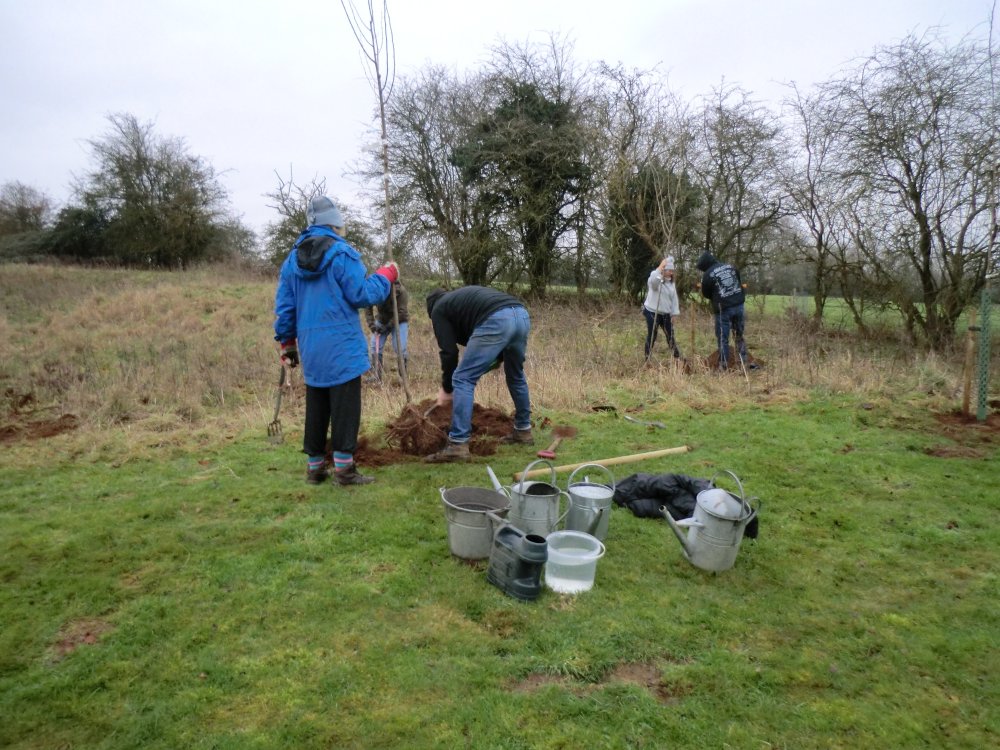In earlier times Sunningwell parish was full of elms. These towering but graceful trees dominated the local landscape, as they did much of Midland England, especially on clay soils. The deep shadows they cast over Dark Lane gave rise to its name. Then came the devastating Dutch elm disease, a deadly fungal infection spread by beetles, which in the 1970s killed almost all the many millions of mature trees across the whole country.
The destruction was not total. A certain number of isolated specimens survived. Some varieties of the tree proved hardier. The wych elm (Ulmus glabra), which thrives more on lighter upland soils, succumbed less readily than the common field or ‘English’ elm (Ulmus minor). Moreover, young elm soon grew back in the hedges, since the tree is propagated mainly by suckers from root-stock which the disease did not reach. There are plenty of them around Sunningwell today. However, as can also be seen in our local hedges, the saplings still perish from the disease once they reach a certain height. More ominously, the elm’s distinctive method of seedless regeneration means all the new growth is cloned from the old, so there is no scope for it to build up natural resistance to the infection.
So it needs human action to promote the elm’s recovery, and here on the Village Green we are able to play our modest part in that. Botanists across the world have been at work for decades trying to identify and create resistant stock. By now there are quite a number of different strains and cultivars that appear to be robust (though of course only future generations will know for sure), and we have secured saplings from several of them in our reintroduction plan for Sunningwell. We began in 2019 beside the stream with a couple of specimens of white elm (Ulmus laevis), a continental variety which favours damp sites. Since then we have planted two groups of six trees each to commemorate the centenary of the village branch of the Women’s Institute: those at the top of the Green are Lutèce (the taller ones) and Ademuz, both of them recent hybrids; those halfway down the slope are Sapporo Autumn Gold, a blend of Siberian and Japanese elms which adds an exotic touch to our flora.
If we can bring back elms, we bring back whole miniature ecosystems with them. We’ve had great help in sourcing our specimens from Peter Cuss, who is the champion in the Upper Thames area for a butterfly called the white-letter hairstreak. You are unlikely to have ssen it yet, since it feeds exclusively on mature elm, and its fortunes have therefore plummeted alongside those of the parent tree. It will be some time before we know whether we can tempt these rare and vulnerable creatures back to Sunningwell along with the elms; but they are fascinating testimony to the subtlety of wildlife interactions all around us: our environment will grow ever poorer if we neglect them.

There are literary and aesthetic reasons too for trying to turn the tide and restore our elms. Without them we lose a cultural tradition. They were favourites with painters, from John Constable to Rowland Hilder, and with writers. Tennyson’s ‘immemorial elms’ (with their moaning doves) were also the ‘rugged elms’ of Gray’s ‘Elegy’, beneath which the ‘rude forefathers of the hamlet sleep’. Probably in their elm coffins, since that was the most famous use of the wood, although it also served for a range of products from bows to hockey sticks, and often as a substitute for oak in timber buildings. Curiously, however, our own most celebrated poetic specimen, the ‘signal-elm’ on Boars Hill in Matthew Arnold’s ‘Thyrsis’, was actually an oak.
Article by Bob Evans

